Jun 04, 2014 07:45 am / Posted by Diana Joan | Categories: Knowledge
Sound that can match the studio’s master tapes… the theoretical ultimate in sound quality.
Most Blu-ray Discs have lossless audio, which means, obviously, no loss of sound quality. In short, the sound quality from Blu-ray Discs is capable of matching the master tapes from the studio.
If you have a sound system capable of using the lossless audio formats, the difference in sound quality is just as apparent as the difference in video quality. In fact, when doing demonstrations in my own home theater before I even get to explain that the sound as well as the video is high-definition the viewers make comments such as “Wow, the sound!” or “I’ve never heard sound like that anywhere.”
What do I need to experience lossless sound?
First of all, if you are just running the sound through your TV speakers there isn’t going to be much difference. You need a separate sound system to really appreciate Blu-ray’s fine sound.
There are several lossless surround sound formats available and older receivers, and even many current ones, do not support these new sound formats. Not all of the players support them, either. I’ll start with the different surround formats, and then explain what equipment you need to experience them at home.
Blu-ray Discs have specifications listed on the box. This disc has an uncompressed PCM track with 5.1 channels of sound.
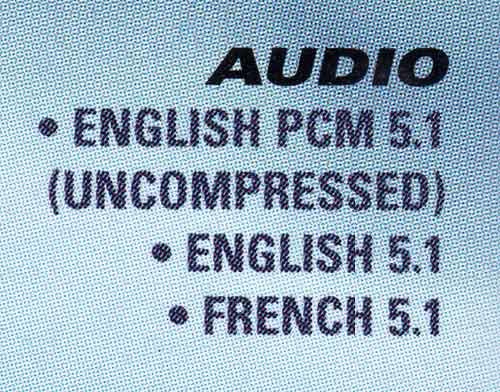
Blu-ray Lossless Audio Formats
The lossless audio formats are:
PCM (also called LPCM, Linear PCM, or Uncompressed )
Dolby TrueHD
DTS-HD Master Audio
PCM, LPCM: PCM and LPCM are the same thing. Some studios call it PCM, for Pulse Code Modulation, a lossless method of digital recording – think of it as generic digital audio. LPCM stands for Linear PCM. Sometimes you will see “20 bit LPCM” or “24-bit LPCM” or “24 bit uncompressed” on the disc cases. The more bits, the higher the resolution and the better the sound.

This disc also has PCM, but it is simply called Uncompressed in this case. With 24-bit resolution, this disc will have very high sound quality. (Audio CDs are only 16-bit. This is much better!)
Uncompressed PCM takes up a lot of space on the disc, which could be used for better video quality or additional features. For this reason studios are moving towards Dolby TrueHD and DTS-HD MA, which deliver the same sound quality but use less space. (Dolby TrueHD and DTS HD Master Audio, which one is better?)
Dolby TrueHD: This format uses lossless compression so the audio information takes up less space on the disc than a PCM file, but no sound quality is lost in the compression process.

DTS-HD Master Audio: DTS-HD consists of two streams: a “core” with a high-resolution (but lossy) DTS track and a DTS-HD MA (Master Audio) track. The MA track is a lossless track capable of duplicating the studio master tape. Like Dolby TrueHD, DTS-HD takes up less space on a disc than uncompressed PCM.

Compared to Dolby TrueHD, fewer Blu-ray players decode DTS-HD MA. This is because DTS-HD MA requires more processing power than Dolby TrueHD, so you are usually looking at a higher-priced player. Two players that decode DTS-HD MA are the Panasonic DMP-BD55 and Sony BDP-S550.
If you don’t plan on upgrading your sound system to experience lossless audio, most Blu-ray movies have a standard Dolby Digital track, just like DVDs. It is a higher quality recording than you find on DVDs, so it will definitely sound better than you are used to but it won’t duplicate the quality of the lossless tracks. The DTS core found on DTS-HD discs is very high quality, too.
What You Need for Lossless Sound
There are several ways to experience lossless sound.
Player that decodes lossless formats to PCM, and an HDMI receiver
The first is with a receiver with an HDMI input capable of receiving multichannel PCM, and a Blu-ray player that can decode Dolby TrueHD and DTS-HD MA and convert it to PCM.

 >>PLAYER DECODES TO PCM>>
>>PLAYER DECODES TO PCM>> 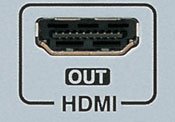
 >>PCM TO RECEIVER>>
>>PCM TO RECEIVER>> 
The player decodes the Dolby TrueHD and DTS-HD MA to PCM and sends it via HDMI to the receiver for playback. The PlayStation 3 is an example of player that uses internal TrueHD and DTS-HD MA decoding and an LPCM output via HDMI. Some others are the Sony BDP-S350 and the Samsung BD-P1500, though they only decode TrueHD.
If the disc has PCM lossless there is no decoding and the player will just send it over to the receiver for reproduction.
Player that bitstreams Dolby TrueHD and DTS-HD MA, and HDMI receiver with lossless decoding
Bitstreaming takes the digital data from the disc and transfers it via HDMI to a receiver with Dolby TrueHD and DTS-HD MA decoding The receiver decodes the lossless formats and powers the speakers.

 >
>  >>PLAYER TO RECEIVER>>
>>PLAYER TO RECEIVER>> 
Bitstream and Menu Sounds/Bonus View
There is a drawback to this method. If you use bitstream you will not hear the disc menu sounds or the secondary track for Bonus View Picture-in-Picture features. The menu sounds are no big deal, but you may like Bonus View. Fortunately you are likely to watch the disc without Bonus View the first time and use the Bonus View during a second viewing, so there is a very easy workaround.
To hear the Bonus View track, go into the player menu and select secondary audio. You won’t hear lossless but you will hear both soundtracks. Set it back to bitstream after you have enjoyed the movie with Bonus View.
Player with internal decoding and multichannel analog outputs, and receiver with multichannel analog inputs
If you have an older receiver without HDMI, this is the method for you! You do not need to upgrade your receiver to experience lossless sound.
Set the player to decode the audio internally and connect the multichannel analog outputs to the receiver’s multichannel analog inputs. Connect the HDMI cable from the player directly to the TV. This will carry the video signal separately. You may want to turn your TV speakers all the way down so they do not add their sound to the sound from your sound system.
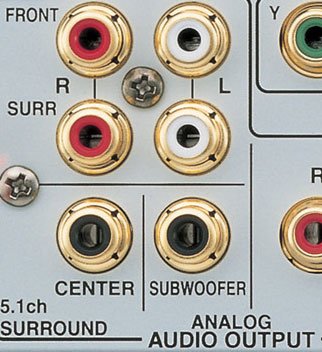 >>
>> 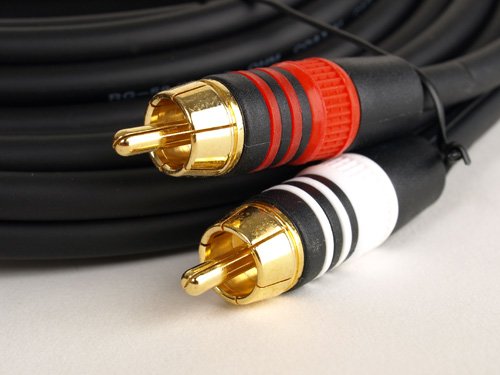 >>
>> 
Multichannel Analog Outputs>>RCA Cables>>Receiver Analog Inputs
If you are using the analog outputs, the player will decode the lossless audio, convert it to analog, then send the high-resolution sound from its analog connections to the receiver’s analog inputs. In this case the surround settings are set on the player and receiver is just a volume control and an amplifier. When you use internal decoding you will hear the menu sounds and Bonus View audio alongwith the lossless soundtrack.
No HDMI or Multichannel Analog Inputs?
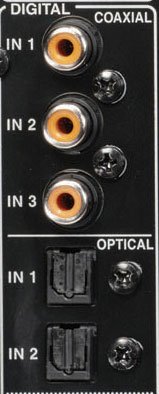
You can still use your receiver’s coaxial and optical digital inputs with your Blu-ray player’s corresponding digital outputs. It won’t sound as good as the lossless formats, but the sound will still greatly exceed the sound quality you are used to with DVDs.
Select the Lossless Track
Most discs do not select the lossless track by default. Before you play the movie (or after it starts with Warner Bros. titles, which launch when placed in the player) go into the menus and select the Dolby TrueHD or Uncompressed PCM track before you press play.
Some movies, such as Spider-Man 3, contain both an Uncompressed PCM track and a Dolby TrueHD track. Looking at the specs, the PCM track is 16-bit and the Dolby TrueHD track is 24-bit. Since more bits are better, if your system can decode Dolby TrueHD you should select the TrueHD track for the best sound quality.
Why include both a PCM and a TrueHD track? Some older players cannot decode or bitstream Dolby TrueHD. Having a PCM track allows people with this player to enjoy lossless with this title. With more and more equipment capable of bitstreaming or decoding the high-def audio formats, it is unlikely you will see much of this in the future.
If your disc has DTS-HD Master Audio, the system will automatically utilize the highest quality track it can process. If your system can decode the lossless Master Audio track, you will hear the lossless track. If your system cannot process the Master Audio track, it defaults to the high resolution DTS core which will work with any Blu-ray player or receiver with DTS decoding. I know from email correspondence with my readers that many consumers aren’t selecting the lossless track when they play their Blu-ray discs. The high quality Dolby Digital tracks sound good enough that they do not know what they are missing! When I tell them to select Dolby TrueHD or PCM, try it again and write me back, the reaction is always “Wow!” or “Holy **** my system never sounded so good, I can’t believe it! With DTS-HD Master Audio, you always get the best sound quality automatically. It’s a great benefit of DTS-HD Master Audio and one reason I have come to personally prefer it over the other lossless formats. I look forward to seeing more and more players that can decode it internally.
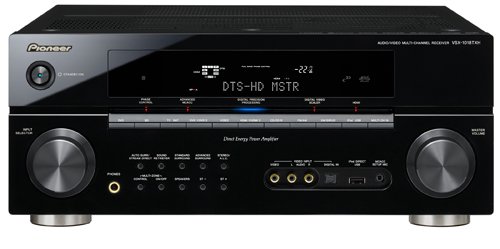
Pioneer VSX-1018, an amazing receiver at an amazing price.
Two Great, Affordable HDMI Receivers
Recommended Blu-ray Players
You can see some of the best player buys on my Recommended Blu-ray players page, linked below.

Recommended Blu-ray Players
Related Articles
Hot Articles & Reviews
- Best Blu-ray to MP4 Converter
- Comparison of Best Blu-ray Ripper Software
- Best 5 Blu-ray Multi-track Ripper
- Best Mac Blu-ray Ripper Review
- Top 5 Best Free Blu-ray Player Software
Any Product-related questions?








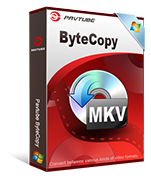

Leave a reply Cancel reply